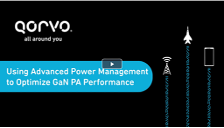Power Solutions for GaN PAs
November 6, 2023
Today, electronic engineers understand GaN technology requires a negative Gate voltage to operate. This was once viewed negatively – no pun intended – but today, there are technologies that make this negative Gate voltage operation insignificant. Today, we have power management integrated circuit (PMIC) devices that can power up and down these GaN PAs easily and reliably – while providing additional benefits we will outline in detail below.
In this blog post, we will discover how the PMIC can be used to design and control RF GaN PA technology in radar, wireless infrastructure, satellite communications and other applications. We will also explore how PMICs help optimize the RF Front-End (RFFE) design for peak performance.
Diving into the System Challenges of RFFE Power
In a previous blog post on radar solutions, "Power Solutions for Phased Array Radar – Featuring GaN PMIC and SiC FETs," we explored the hurdles when designing using GaN PA technology in an RFFE. A review of those is listed below.
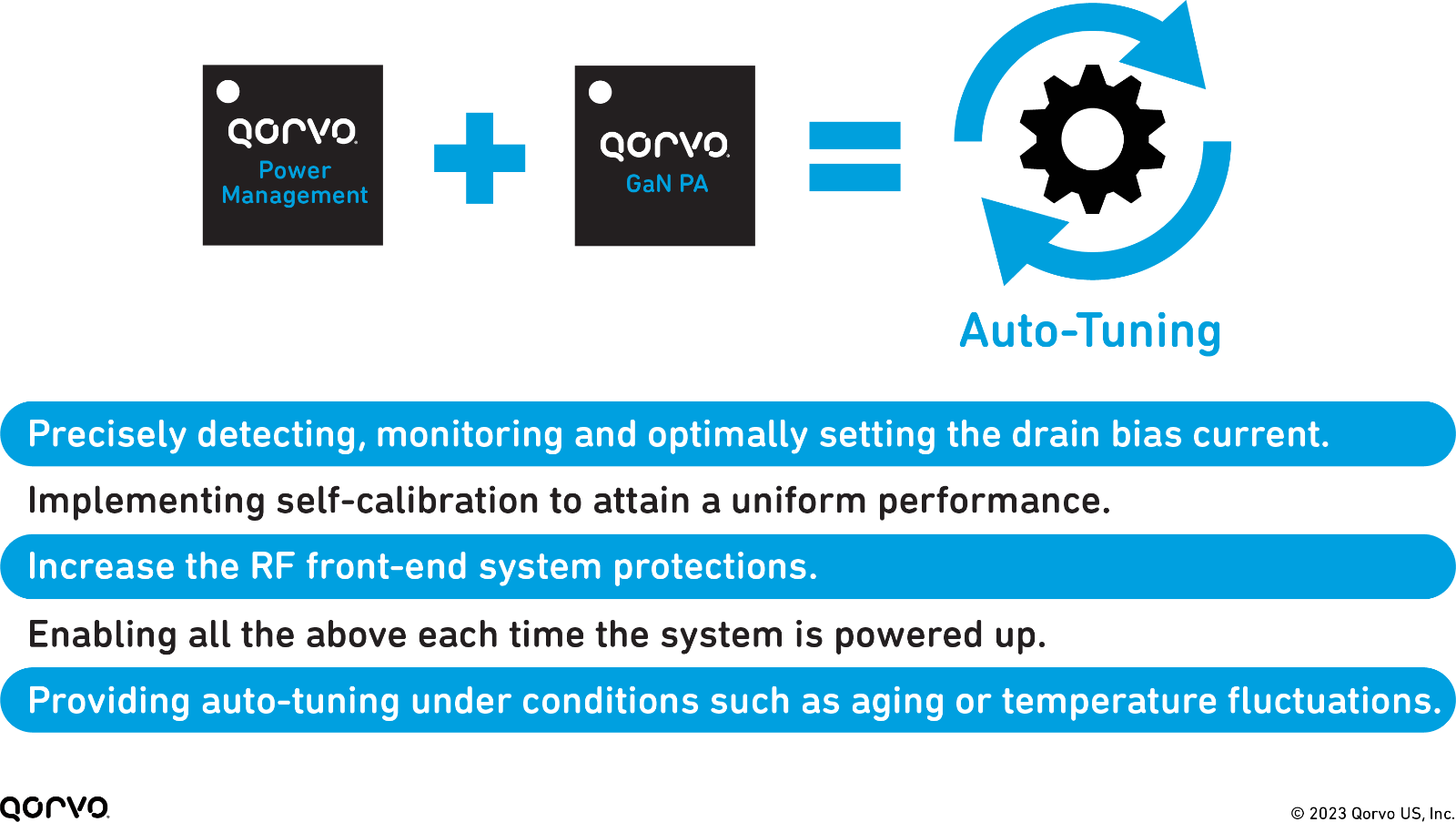
This video demonstrates how customers using GaN PAs can use the Qorvo ACT41000 power management module to help efficiently power-up and power-down those devices.
Watch the Video
From a power supply perspective, there are additional hurdles – those being:
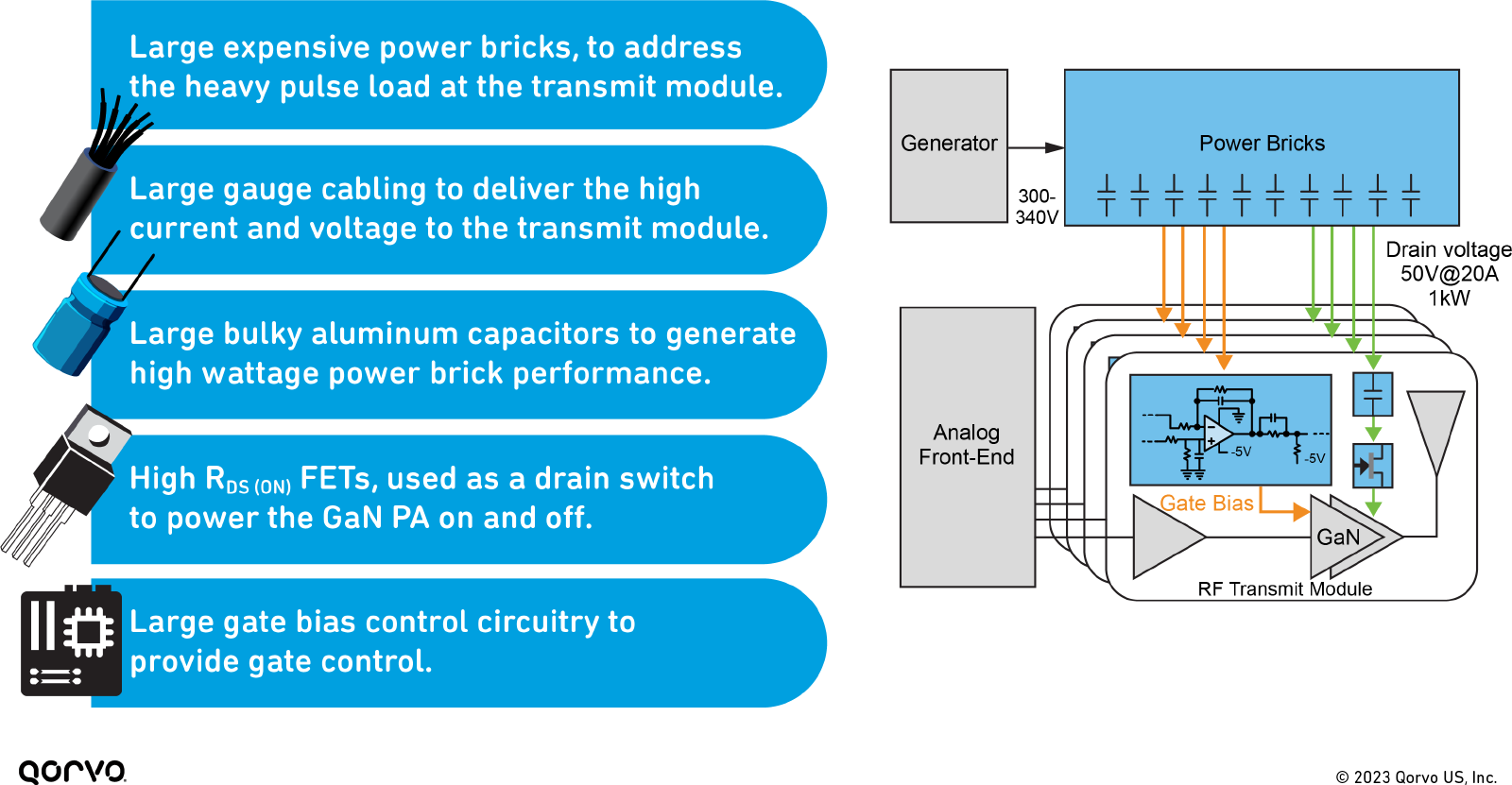
These above hurdles can be resolved entirely when using a PMIC, as we outlined in our previous blog post.
A Deeper Look into the Power Supply Rail
In many RF amplifier systems, the power supply rail for the RFFE is most likely switched mode. These switch mode supplies have high voltage swings and fast switching edges, which can increase the likelihood of noise. These switched-mode power supplies can also generate a small amount of noise power supply modulation or as measured, a power supply modulation ratio (PSMR). This PSMR is a measure of imperfections (ripple and noise) that are modulated onto the RF transmit carrier. A non-isolated RF Point of Load regulator (RF PoL, in a PMIC) can be used to reduce or remove this noise. Implementing the RF PoL/PMIC provides the RFFE application with the needed high-accuracy voltage rail, load with fast dynamic response and low noise necessary for optimal operation.
For an RF PA application, it is important that the transmitter signal is pure and the power supply does not interfere, causing spurs (extraneous line emissions) around the carrier frequency. This is where an RF PoL shines. It will produce a high output voltage that helps optimize PA efficiency, controls the PA device ratings, and provides a tunable control loop while sequentially providing a low noise power source. As shown in the below image, a fully functioning low-noise power supply chain can be implemented using three power supply chain devices – SiC FETs, ACT43950 and ACT43850.
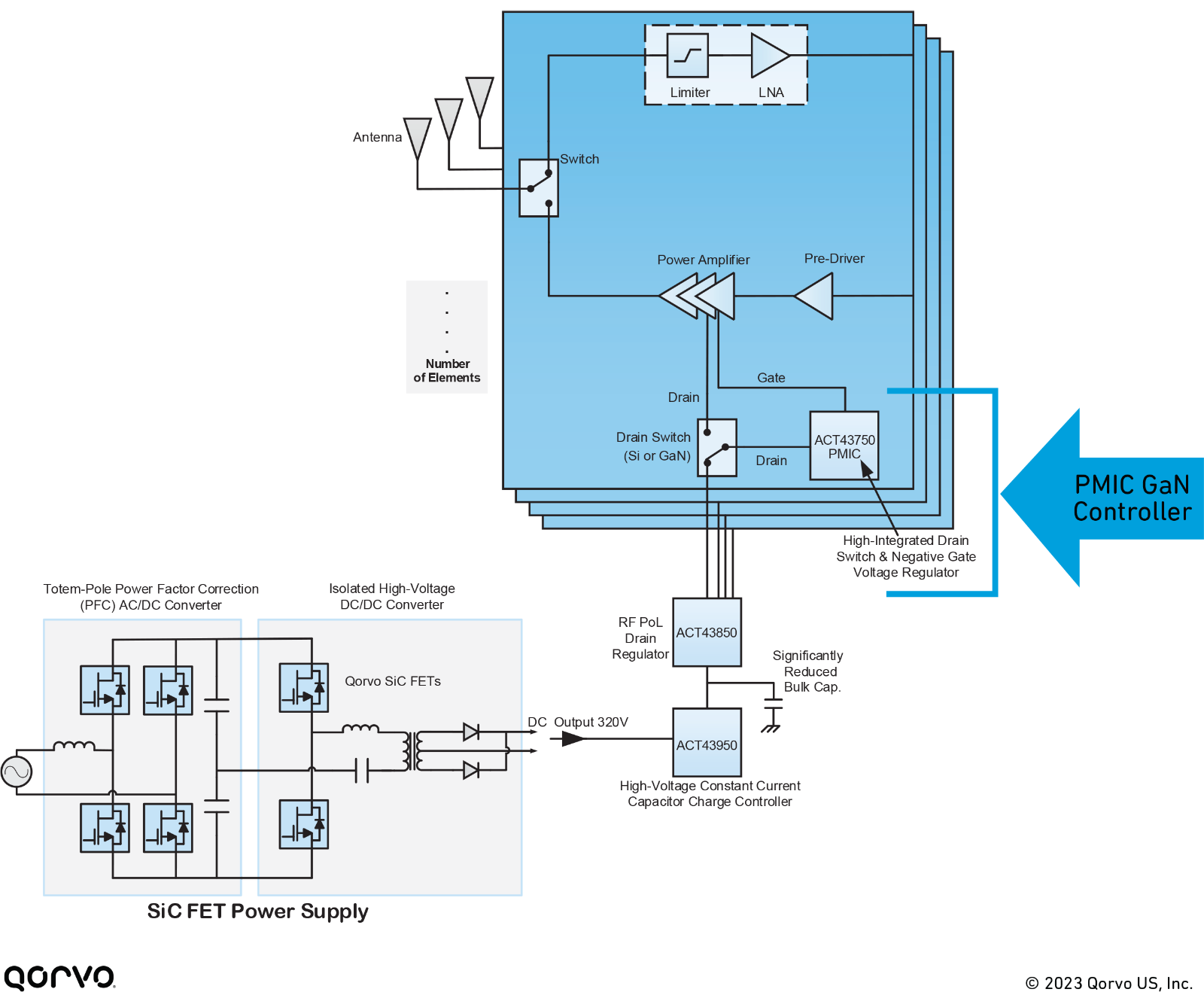
Figure 1: Simplified power supply, PMIC and RFFE
A breakdown of the above PMICs block diagram:
- GaN PA PMIC Controller
- ACT43750 – is a highly integrated Drain switch and negative Gate voltage regulator that enables ultra-fast RF GaN PA Drain switching. Additionally, it automatically and instantaneously maintains a constant RF GaN PA Gate voltage bias sequence and provides dynamic bias calibration – adjusting for temperature fluctuations, trapping and device aging.
- Enables startup auto-biasing sequencing
- Auto-generates a negative Gate bias voltage
- Auto-calibrates the bias point at power up
- Provides on/off Drain switching
- Recalibrates the bias point when the GaN PA drifts due to temperature drift and aging
- Power Supply – constant current regulator and step down RFPoL
- ACT43950 – is a high-voltage constant-current capacitor charge controller that works with Qorvo's SIC FETs to provide a fully programmable output voltage rail and current.
- ACT43850 – an RF PoL step-down DC-DC power converter using the output from the ACT43950 and stepping it down to a well-regulated voltage optimized for a GaN PA. With its advanced configuration options, it allows RFFE systems to minimize noise and electromagnetic interference (EMI) for maximized performance.
In the Figure 1, an ACT43750 regulates the Gate and Drain – with a Drain range of 10 to 55 Volts. Note – if your system design already has the voltage rails implemented, the ACT43750 can also be used independently. In this case, the ACT43750 and switch (GaN or Si) are added. The ACT43750 on its own in the system supports a 10 to 55 Volt DC constant rail for the GaN device in the RF system (some GaN PAs suited for this voltage range are – QPD0005M, QPA0017 and QPA2612, others are located here). However, without adding the ACT43950 and ACT43850, your design will require larger power components and wiring, as outlined above.
For a lower voltage solution, the ACT41000 can be used, offering a Drain voltage range of 3 to 24 volts. This device was outlined in a previous blog post, “Powering-up (and down) GaN Power Amplifiers with Power Management Modules.” The blog post and associated tutorial video steps through the setup and use of this device in the system.
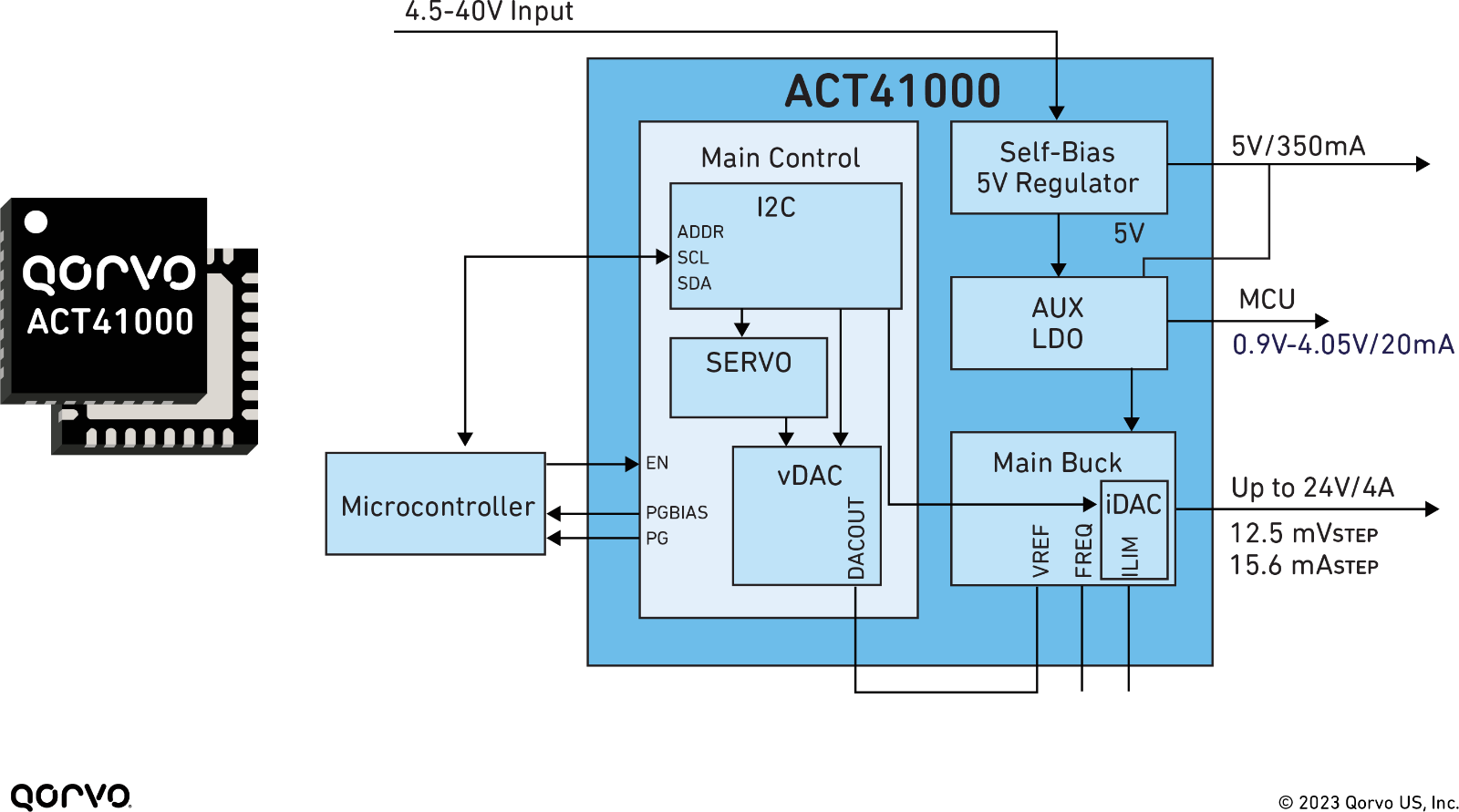
Figure 2: ACT41000 PMIC used in RF system design.
TheACT41000, as shown in the above PMIC, SiC FETs and GaN PA devices, works in radar, wireless infrastructure, electronic warfare and more.
A Final Word
Today's RF systems are becoming smaller, requiring wider RF bandwidth, higher power, operations in higher temperatures and must be more reliable than previous solutions. This typically means the system complexity will increase, but using Qorvo's PMICs for RF GaN applications has made the complex power tree more manageable. PMICs make control, operation and performance more accurate, reliable and optimized. Technology advancement has “WOW'ed” us all again. Now using PMICs, design engineers can make their design better and with ease while offering a highly technologically advanced RFFE system.
For more on this topic and solutions for your latest design challenge, visit the Qorvo Design Hub for a rich assortment of videos, blog articles, white papers, tools and more.
For more information on this and other Qorvo phased array radar solutions, please visit Qorvo.com or reach out to Technical Support.
Have another topic that you would like Qorvo experts to cover? Email your suggestions to the Qorvo Blog team and it could be featured in an upcoming post. Please include your contact information in the body of the email.
